Milos Nikolic
In-Database Data Imputation
Jan 07, 2024Abstract:Missing data is a widespread problem in many domains, creating challenges in data analysis and decision making. Traditional techniques for dealing with missing data, such as excluding incomplete records or imputing simple estimates (e.g., mean), are computationally efficient but may introduce bias and disrupt variable relationships, leading to inaccurate analyses. Model-based imputation techniques offer a more robust solution that preserves the variability and relationships in the data, but they demand significantly more computation time, limiting their applicability to small datasets. This work enables efficient, high-quality, and scalable data imputation within a database system using the widely used MICE method. We adapt this method to exploit computation sharing and a ring abstraction for faster model training. To impute both continuous and categorical values, we develop techniques for in-database learning of stochastic linear regression and Gaussian discriminant analysis models. Our MICE implementations in PostgreSQL and DuckDB outperform alternative MICE implementations and model-based imputation techniques by up to two orders of magnitude in terms of computation time, while maintaining high imputation quality.
DPRed: Making Typical Activation Values Matter In Deep Learning Computing
May 15, 2018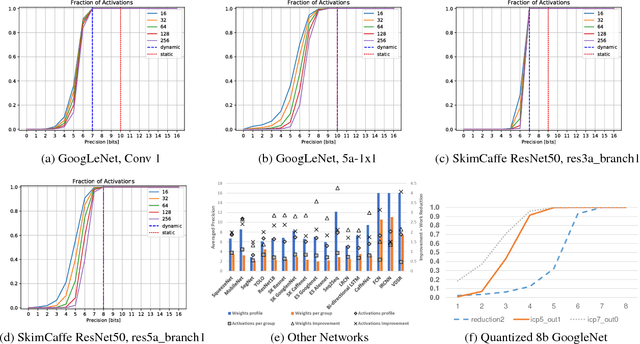
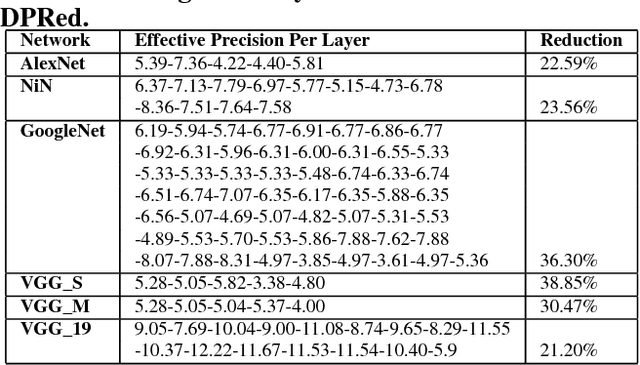
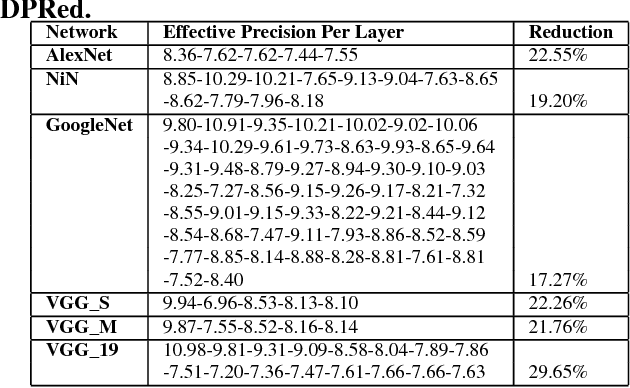

Abstract:We show that selecting a fixed precision for all values in Convolutional Neural Networks, even if that precision is different per layer, amounts to worst case design. We show that much lower precisions can be used if we could target the common case instead by tailoring the precision at a much finer granularity than that of a layer. While this observation may not be surprising, to date no design takes advantage of it in practice. We propose Dynamic Prediction Reduction (DPRed), where hardware on-the-fly detects the precision activations need at a much finer granularity than a whole layer. Further we encode activations and weights using the respective per group dynamically and statically detected precisions to reduce off- and on-chip storage and communication. We demonstrate a practical implementation of DPRed with DPRed Stripes (DPRS), a data-parallel hardware accelerator that adjusts precision on-the-fly to accommodate the values of the activations it processes concurrently. DPRS accelerates convolutional layers and executes unmodified convolutional neural networks. Ignoring offchip communication, DPRS is 2.61x faster and 1.84x more energy efficient than a fixed-precision accelerator for a set of convolutional neural networks. We further extend DPRS to exploit activation and weight precisions for fully-connected layers. The enhanced design improves average performance and energy efficiency respectively by 2.59x and 1.19x over the fixed-precision accelerator for a broader set of neural networks. Finally, we consider a lower cost variant that supports only even precision widths which offers better energy efficiency. Taking into account off-chip communication, DPRed compression reduces off-chip traffic to nearly 35% on average compared to no compression making it possible to sustain higher performance for a given off-chip memory interface while also boosting energy efficiency.
Laconic Deep Learning Computing
May 10, 2018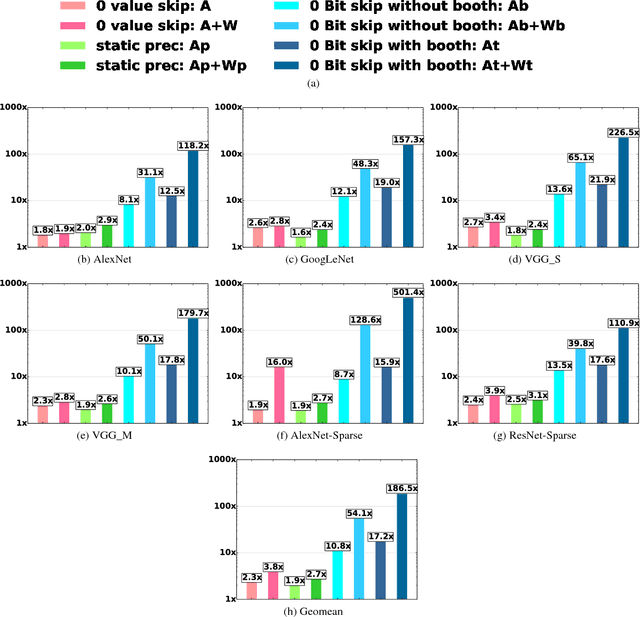

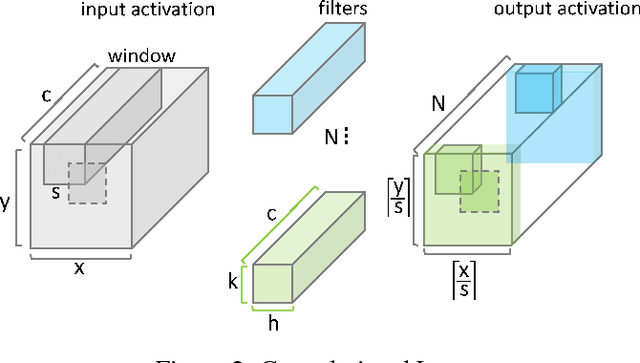
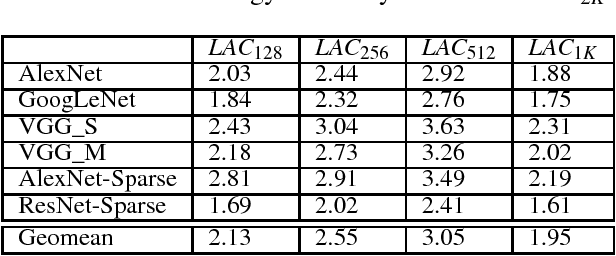
Abstract:We motivate a method for transparently identifying ineffectual computations in unmodified Deep Learning models and without affecting accuracy. Specifically, we show that if we decompose multiplications down to the bit level the amount of work performed during inference for image classification models can be consistently reduced by two orders of magnitude. In the best case studied of a sparse variant of AlexNet, this approach can ideally reduce computation work by more than 500x. We present Laconic a hardware accelerator that implements this approach to improve execution time, and energy efficiency for inference with Deep Learning Networks. Laconic judiciously gives up some of the work reduction potential to yield a low-cost, simple, and energy efficient design that outperforms other state-of-the-art accelerators. For example, a Laconic configuration that uses a weight memory interface with just 128 wires outperforms a conventional accelerator with a 2K-wire weight memory interface by 2.3x on average while being 2.13x more energy efficient on average. A Laconic configuration that uses a 1K-wire weight memory interface, outperforms the 2K-wire conventional accelerator by 15.4x and is 1.95x more energy efficient. Laconic does not require but rewards advances in model design such as a reduction in precision, the use of alternate numeric representations that reduce the number of bits that are "1", or an increase in weight or activation sparsity.
Bit-Tactical: Exploiting Ineffectual Computations in Convolutional Neural Networks: Which, Why, and How
Mar 09, 2018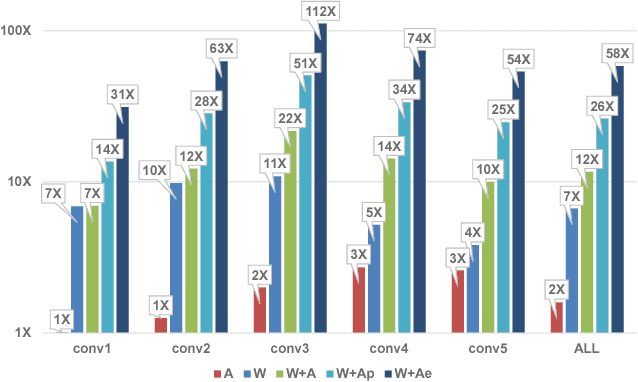
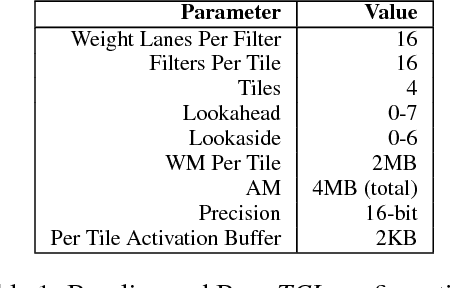
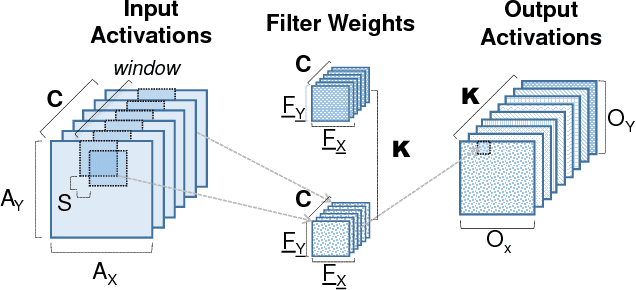

Abstract:We show that, during inference with Convolutional Neural Networks (CNNs), more than 2x to $8x ineffectual work can be exposed if instead of targeting those weights and activations that are zero, we target different combinations of value stream properties. We demonstrate a practical application with Bit-Tactical (TCL), a hardware accelerator which exploits weight sparsity, per layer precision variability and dynamic fine-grain precision reduction for activations, and optionally the naturally occurring sparse effectual bit content of activations to improve performance and energy efficiency. TCL benefits both sparse and dense CNNs, natively supports both convolutional and fully-connected layers, and exploits properties of all activations to reduce storage, communication, and computation demands. While TCL does not require changes to the CNN to deliver benefits, it does reward any technique that would amplify any of the aforementioned weight and activation value properties. Compared to an equivalent data-parallel accelerator for dense CNNs, TCLp, a variant of TCL improves performance by 5.05x and is 2.98x more energy efficient while requiring 22% more area.
 Add to Chrome
Add to Chrome Add to Firefox
Add to Firefox Add to Edge
Add to Edge